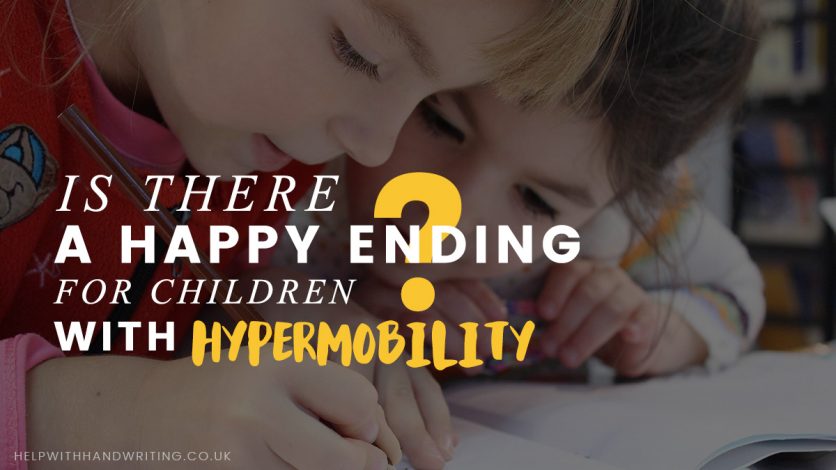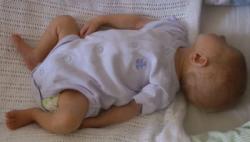hypermobility in babies nhs
Hypermobility is commonly seen in young children. Joint hypermobility means that some or all of a persons joints have an unusually large range of movement.
Joint hypermobility in babies and children.

. In many cases the joints become stiffer with age although joint hypermobility and its associated symptoms can continue into adult life. All joints have a cavity containing a small amount of fluid which allows movement to happen. The ligaments that offer stability are more lax and therefore cause increased flexibility.
Foot shape in some children with OI changes following fractures or due to bowing of leg bones. It is associated with chronic exercise-related pain. Hypermobile joints are less stable which can lead to increased sprains trips and falls.
When you have joint hypermobility it means your joints are more flexible than in other people. How common is hypermobility. Anyone who has symptoms as a result of having hypermobile joints but who does not have all the features of Ehlers-Danlos syndrome has a hypermobility spectrum disorder.
Most children are flexible but some more so than others. Over time pain can become an issue. Hypermobility often improves with age.
A doctor will also use more detailed criteria to help their diagnosis. In the majority of children this will become less as they get older but a small percentage will remain very flexible. In most cases hypermobility peaks at.
While standing put hands flat on floor while knees stay straight. Hypermobility may affect just one joint or many joints. Hypermobility do not experience any significant difficulties.
Hypermobility may be a red flag symptom of a more severe disease with underlying multi-organ involvement. Joint hypermobility in babies and children is even more common and usually causes no problems. Patients with these subtypes also have joint hypermobility.
However causes of generalised joint hypermobility include. There is a normal variance in the population. This is a normal finding and very common in children.
Most children will get less flexible as they. 4 points and pain in 4 or more joints for at least 3 months joint hypermobility syndrome likely. It can occur in one or more joints and can range in severity.
Families should be aware that its main risk comes from preventing children to live normal lives. Most children are flexible but some more so than others. Someone can be described as Hypermobile when they are more flexible than the average person.
A small number of children will remain flexible and it. Evidence Summaries Add filter Add this result to my export selection. It is common in the general population of children and young adults.
Hypermobility refers to an increased range of movement in multiple joints for their age. This is more common if their parents are still very flexible. Patient Add filter Benign joint hypermobility syndrome BJHS is primarily seen in children and younger adolescents.
This reason the preferred term to use is Joint Hypermobility Syndrome JHS. Children should be encouraged to maintain a normal level of activity including playing any sports they are interested in. It is extremely common in children having being reported in 25 to 50 of those younger than 10 years of age.
Generally children are flexible some more than others. Joint hypermobility is thought to be very common particularly in children and young people. It affects 7 10 of school age children in the UK.
WHO advises that all children aged 5-17 should do at least 60 minutes of moderate to vigorous-intensity physical activity daily and that any more than this has additional physical and mental health benefits. Assessing and managing this condition in children and young people requires specialist knowledge since for all the extra-articular symptoms including abdominal involvement headaches fatigue etc. Hypermobility in the joints of the feet and ankles may cause the feet to roll in giving an excessively flat-footed appearance.
These problems mainly affect children and young adolescents with extra-flexible hypermobile joints who develop pain on exercise which persists when they rest. If you remain concerned PALS can also advise upon how to make a formal complaint. Advice for hypermobility oxleasnhsuk Children with hypermobile joints have too much movement in their joints.
Most children will get less flexible as they get older and should improve as the childs strength and co-ordination develop. Hypermobility Syndrome Causes Symptoms and Treatment. The older you are the less likely it is you will be hypermobile.
May 14 2021 in babies Tagged babies hypermobility - 8 Minutes. It is extremely common in children having being reported in 25 to 50 of those younger than 10 years of age. Prevalence of hypermobility varies greatly depending on the literature.
Some estimates suggest that around one in every five people in the UK may have hypermobile joints. This can occur with just a couple of joints or all joints. Hypermobile Ehlers Danlos Syndrome hEDS is a condition characterised by hypermobile joints widespread musculoskeletal pain and other symptoms.
A joint is the place on the body where two bones meet. Inheriting the condition from a parent about 75 of people affected by. Arthritis Research UK Joint hypermobility differences in the shape of your bones such as shallow hip sockets.
Hypermobility is a condition in which you have more movement in your joints. 4 points hypermobility likely. In general hypermobility should be considered a connective tissue advantage.
It is also known as Ehlers Danlos Syndrome type III. Hypermobility is commonly seen in young children. In many situations hypermobility.
Hypermobility In Babies Nhs. It is not an illness or disease and is a normal variation. Hypermobility is actually very common in the normal population.
Research studies have shown that up to 71 of children under 8 years of age and 55 of 4-14 year olds have some degree of hypermobility De Inocencio et al 2004. Between 25-50 of children under 10 are considered hypermobile. Keeping active and strong is important and helps reduce joint pain as fitness and balance improve over time.
There are many other types of EDS but most are very rare. Management of hypermobility should generally be in Primary Care. It is sometimes referred to as being double jointed and is quite common about 1 in 10 people are hypermobile.

Joint Hypermobility Information For Children And Young People Cuh
Living With A Hypermobile Toddler

Joint Hypermobility In Babies And Children Emma S Diary

Pin By Natalie Martin On Nurse Stuff 2 Physiotherapy Neurology Ocupational Therapy

How To Recognise Joint Hypermobility In Your Child My Strong Little Body

What Is Hypermobility In Babies Children Young Adults Therapy Stars

Pin By Natalie Martin On Nurse Stuff 2 Physiotherapy Neurology Ocupational Therapy

How Hypermobility And Low Muscle Tone Affect Your Baby S Development Skills For Action

Is There A Happy Ending For Children With Hypermobility Double Jointed
Neurological Disorders Anthropometrics Hcp En Nestle Health Science Nhs

Joint Hypermobility Information For Children And Young People Cuh

How Hypermobility And Low Muscle Tone Affect Your Baby S Development Skills For Action

How Hypermobility And Low Muscle Tone Affect Your Baby S Development Skills For Action